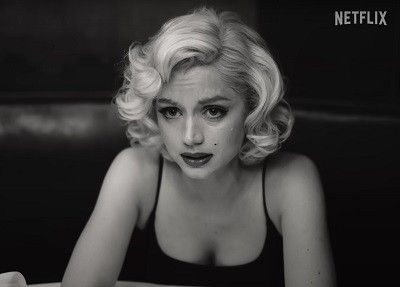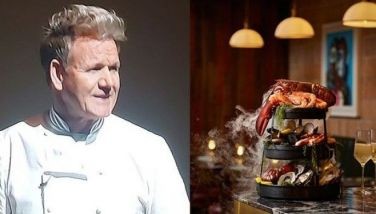The myth of Marilyn Monroe: 'Blonde' review

MABINI, Batangas — Over half a century ago, thousands fell in love with Norma Jeane Baker, and millions more adored Marilyn Monroe — the subject of Netflix's newest film "Blonde" directed by Andrew Dominik.
"Blonde" is a fictionalized take on the life of Marilyn Monroe, played by Ana de Armas, as based on Joyce Carol Oates' 2000 novel of the same name.
The movie is bold on several fronts, primarily it being the first NC-17 rated movie on any streaming platform — though such maturity could be expected from a Monroe film — and it runs for nearly three hours.
It is perhaps those two aspects that will have people turning away upon viewing, with many scenes just too explicitly graphic and often unnecessary; it is even sadder to think that these things most likely did happen, albeit fiercely dramatized.
In doing so, it minimizes the kind of perennial figure that Monroe was to a woman with daddy issues who was preyed upon endlessly, when in fact she was so much more than the famous blonde girl a majority of people box her in as.
Dominik did promise he would not hold back in telling Monroe's story, but perhaps he went too far and just doubled down on the hardships she faced in her life when there was so much else about Monroe to know like her unique intelligence or tenacity and her relationship with Ella Fitzgerald.
Related: Bookish and traumatized: 5 less-known facts about Marilyn Monroe
But all these should not take away from the vision this film has landed upon, with many scenes feeling like a fever dream that somewhat assures you there is fantasy buried within this tragic tale.
One example is a scene de Armas' Marilyn shares with Adrien Brody's Arthur Miller, which slows the film down — an almost more cheerful take on how "Spencer" explored Princess Diana — amid various aspect ratios that only add to the spectacle.
De Armas is a guaranteed star of the 21st century, even seasoned actors like Brody and Bobby Cannavale fade to the side whenever she takes command of the camera; her popularity is only going to grow more.
Her Cuban accent comes through several times to remind you that she is de Armas, but for the rest, she has everyone convinced that she's indeed Monroe — from the soft, breathy voice to the vulnerable way she interacts with others.
Completing this transformation is the makeup and hairstyling — so key in turning de Armas into Monroe — and Jennifer Johnson's costume design that nailed some of Monroe's iconic outfits like the ivory cocktail dress of "The Seven Year Itch" and the pink silk-satin dress and gloves of "Gentlemen Prefer Blondes" (with matching jewels to boot).
Many thoughts will be conjured upon finishing "Blonde," most of them negative because the film only reminds people how cruelly treated Monroe was during her short life, not even giving her a chance to glimpse at true hope.
No matter what films and adaptations will attempt, history will remember Marilyn Monroe as an icon who deserved better, and that there is more to an individual than their personal tragedies.
RELATED: 'Blonde' trailer teases personal look into Marilyn Monroe
- Latest
- Trending



















 Exclusive
Exclusive









